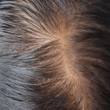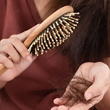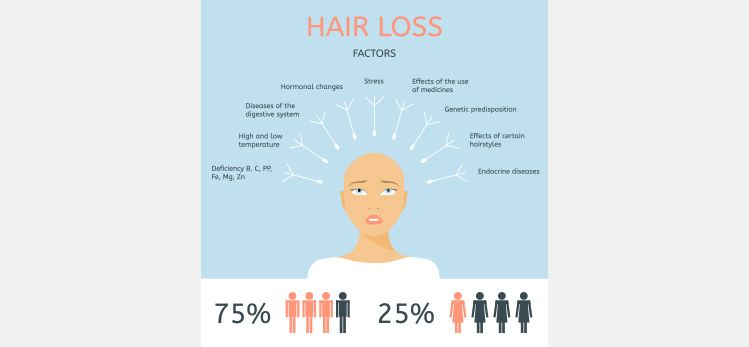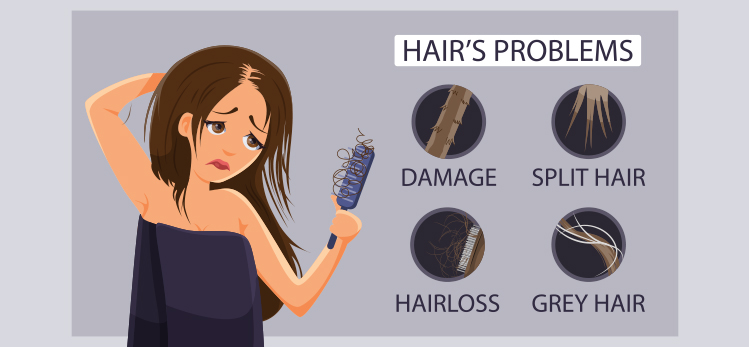How To Control Hair Loss During Monsoon?
Hair fall in monsoon is a seasonal problem. Abrupt shedding, clogged pores, excess oil in the scalp, and rough hair often make hair management a nightmare. Excess humidity makes things worse, leading to dandruff, yeast (Malassezia) infection, breaking of hair follicles, leading to unusual hair shedding.
Extreme hair loss may require clinical intervention, but it's a temporary problem. Learn more about clinically approved methods to reduce hair fall, enhancing natural hair growth.
Natural hair shedding is a crucial part of the hair cycle to replace dead scalp cells, repair brittle hair strands, and enhance the growth of new hair follicles. Hair fall in monsoon rises from 10 to 20 hair strands to 80-100 or more hair strands. The probable reasons that cause hair loss during monsoon include;
1. Unhygienic Scalp
Scalp health is a prime factor responsible for hair problems. Those with poor hygiene sense (irregular bathing), lack of proper shampoo to clear clogged pores, and dandruff accumulation face serious hair fall issues. Dirty scalp causes particulate accumulation around the hair follicles. It prevents natural oil secretion, making hair strands brittle and prone to shedding early.
2. Malassezia Infections
Malassezia is a yeast-like infection that thrives in dirty hair, triggering excessive hair fall. It thrives on someone with scalp problems, stress, lower immunity, and getting treated for medical conditions. The natural hair oil secretion gets affected, making hair rough and brittle.
How to Reduce Hair Loss in Monsoon?
Regular hair care is mandatory to reduce hair loss, encourage natural hair growth, and good scalp health. Consult a dermatologist for clinical options to arrest prolonged hair loss.
Eat healthily, sleep plenty, a must for healthy hair.
Pat your hair dry with a microfiber or smooth textured towel
Scalp massages to reduce dead scalp cell pile-ups and enhance circulation to nourish hair follicles
Leave smoking/alcohol.
Practice mindfulness to lower your stress.
Comb your hair daily. It helps to spread the hair oil from the root to the tip. Use a natural and soft comb (wood) over synthetic made.
Wash your hair after getting drenched in the rain. Rain contains dissolved acidulated gases. It alters the scalp pH, messing up your hair health.
Use an anti-dandruff shampoo to cleanse your scalp and hair of dirt and clogged pores.
Experiencing a hand full of hair strands is traumatic.Visit a dermatologist to diagnose your hair fall and toget treated for any underlying issues.
Myth Busters HairFall

Androgenetic Alopecia - Everything You Need To Know
Have you been experiencing excessive hair fall over a prolonged period of time? It could be an early sign of androgenetic alopecia. It is a hair loss disorder common in both genders and can lead to progressive thinning and even baldness in some patients if not caught and treated early.

How To Make Hair Grow Faster For Men
A head full of healthy hair is a matter of confidence. Hair has its own mechanism of growing and shedding, and it is when this mechanism is thrown off that growth is hindered. Especially in the case of males, hair growth faces a lot of hiccups that can easily be managed.

Female Pattern Baldness - Causes & Treatments
Have you suddenly noticed an increase in the number of hair strands on your pillow in the morning? Or is your ponytail getting thinner by day? Well, you might be suffering from female pattern baldness. While that does sound scary, identifying it early on is key to treating this condition effectively. So keep reading to know what this is, how you can identify it, and most importantly, what treatments you can avail of to get your beautiful lustrous hair back.

What Are The Reasons For Hairfall?
Almost everyone experiences some amount of hair thinning over the years. Shedding around 50 to 100 single strands of hair per day is considered normal. However, losing more than 150 strands a day, experiencing sudden thinning, or developing circular bald patches on your scalp are reasons for concern. Hair loss occurs when new hair doesn’t grow fast enough to replace the amount of hair you lose daily. Hair can fall due to various reasons, with hereditary hair loss and poor nutrition being the most common hair fall reasons.

Expert Approved Tips For Hair Growth
What can be more debilitating than seeing hundreds of hair strands shedding from your scalp every time you brush your hair? Also, excessive molting occurs during seasonal changes that can be very stressful for you. Although it’s okay to lose between 50-100 strands every day, according to the American Academy of Dermatology, the problem occurs when you start shedding more than normal. But that doesn’t mean you have to feel helpless as there are ways to grow your hair back. Even if you are coping with baldness or alopecia, certain hair growth tips from dermatologists can come to your rescue. Read on to discover how these tips can be your savior when abnormal hair fall problems are in sight.
Trending Videos
+ 3 Sources
LMRC - GGI-CO-A2-DMA-300026127-300026127-WM-J21-282
© 2021 Dr. Reddy’s Laboratories Ltd. All rights reserved.

